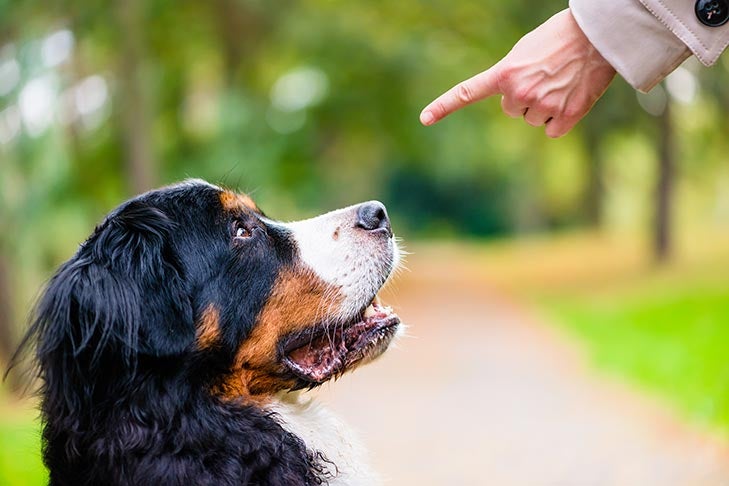
You’ve gone to training classes, read books, and even watched videos. Yet your dog still seems to dislike training with you. This is usually around the time a pet owner will tell her dog trainer that her pup is stubborn, and therefore cannot be trained. However, in situations like this, an owner is often accidentally sabotaging the training sessions.
AKC GoodDog! Helpline program manager Penny Leigh, CPDT-KA, reveals some of the most common mistakes we make that can cause a dog to disengage.
Attitude
“Owners need to always approach training with a positive attitude and avoid telling the dog ‘no’ or making negative sounds like ‘ehhh,’ etc.,” says Leigh. While the idea of a “negative marker” has been around for decades and was originally used by positive reinforcement trainers, research has shown that a negative marker actually hinders learning.
“Dogs need to feel confident in order to learn new skills,” explains Leigh. “If they are constantly being told that they are wrong, then they don’t want to try anymore.” Enter what many dog owners describe as the “stubborn” dog. This is a canine companion that seems to be ignoring his owner — doing everything except what is asked of him.
“Often described as ‘blowing them off,’ in reality, the dog does not want to try because he does not want to be wrong,” Leigh shares. “It is easier to sniff, scratch, yawn, and act like he does not hear the owner. I often tell my students to imagine when they were in school. If you had a teacher who was always telling you that you were wrong, you would not raise your hand any longer to try to answer a question.” Instead, you need to ignore your dog’s mistakes and allow him to try again. Dogs that are not punished for trying are more likely to offer behaviors.

Rewards
It’s often in our nature to point out the bad and ignore the good. We need to do the exact opposite when training our dogs. “Be generous with your rewards, and you will have a dog that loves to work with you,” says Leigh.
Our body language can really affect how a dog reacts to training — canines are much better at reading us than we are at reading them. “Some dogs are more sensitive than others to owners’ body language,” Leigh continues. “Make sure you are not hovering over the dog and getting too much into his space when you are working with him.”
This is especially important for a shy or nervous dog that may shut down if he feels you are getting too close. Leigh adds that you should pay attention to how you are standing while training. “Convey positive body language and keep moving, so that the dog is engaged.”
Mood
“Dogs are extremely tuned-in to their humans’ feelings, and so they will be stressed if you are, which is not a positive experience for either one of you,” Leigh explains. “Better to skip training and wait until you are rested and in a good mood to get the most out of your dog. Remember, training should always be fun for your dog and for you!”
If you find yourself getting frustrated, take a break to do something different, like taking a walk around the block. You’ll return recharged and ready to go.

